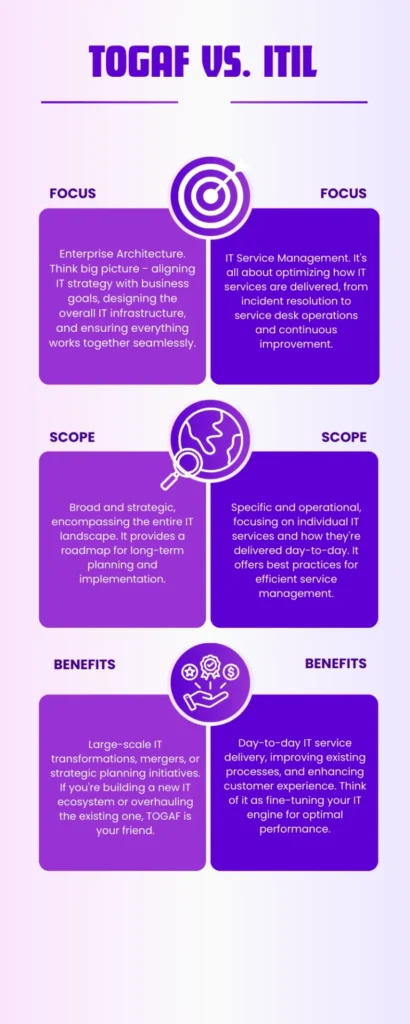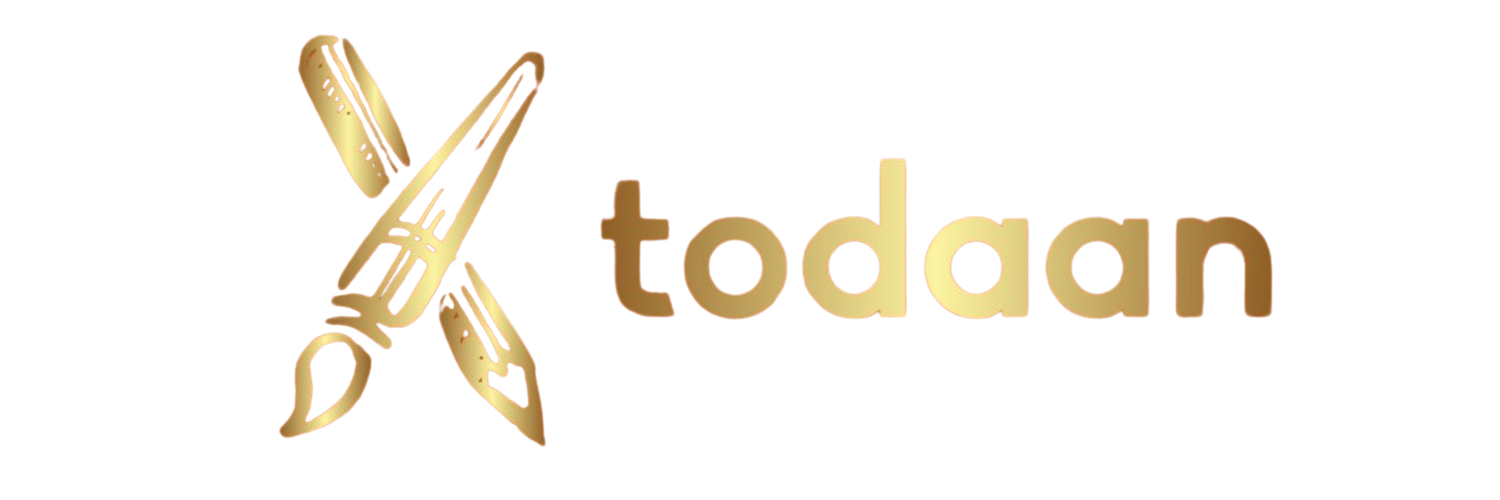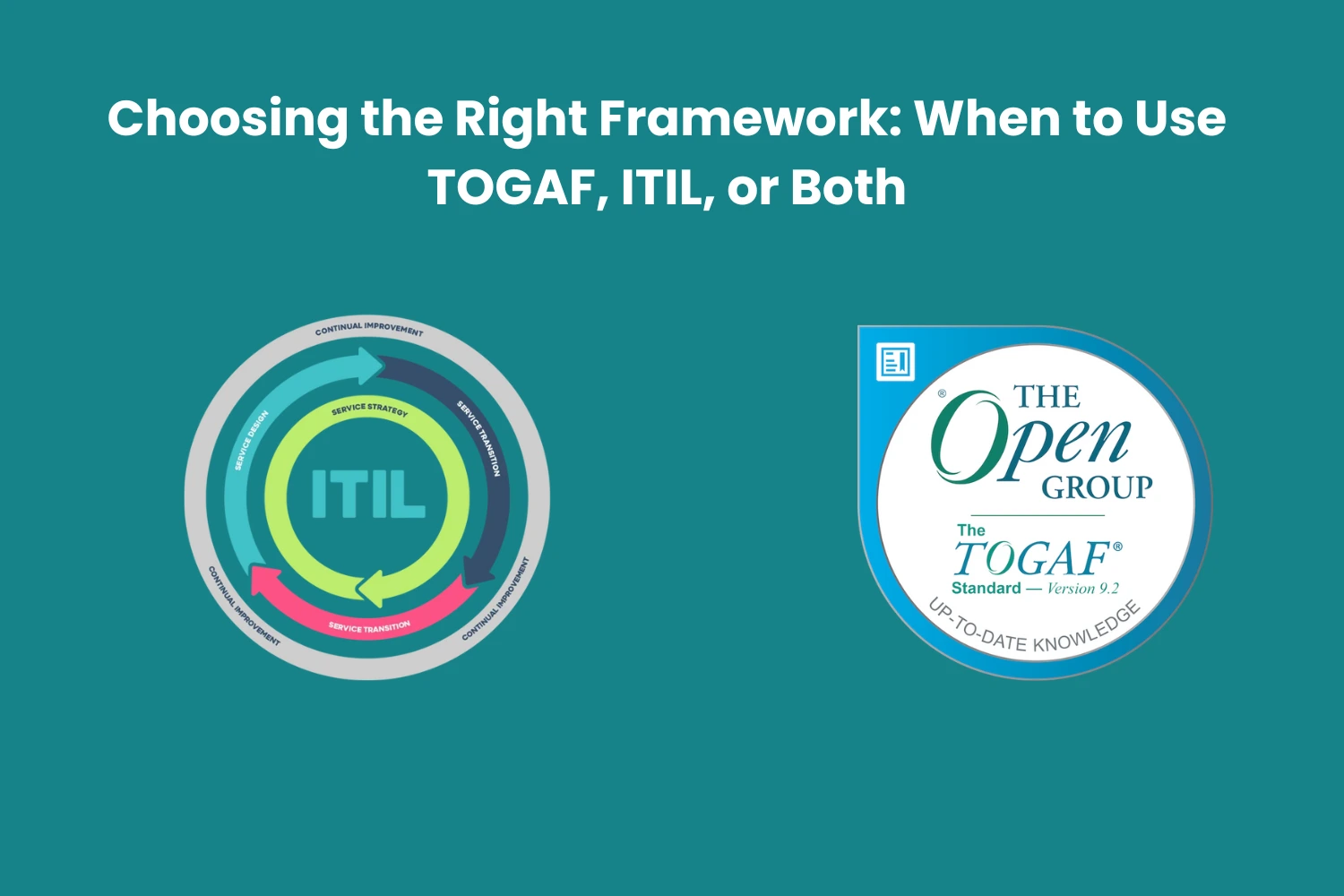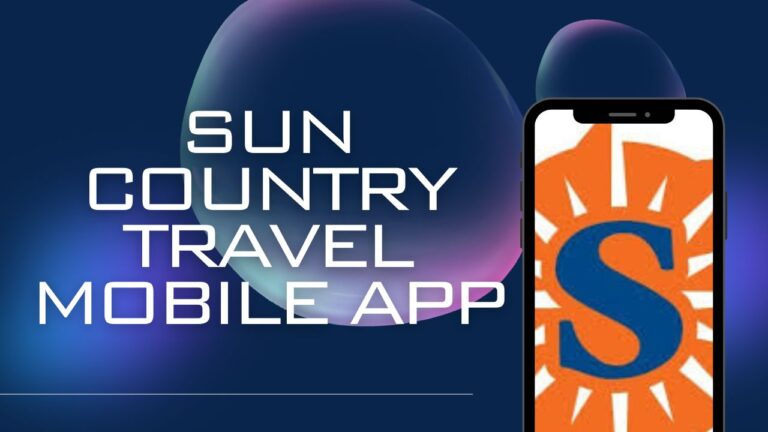Choosing the Right Framework: When to Use TOGAF, ITIL, or Both
The Open Group Architectural Framework (TOGAF) is a high-level enterprise architectural technique that helps with software development by decreasing mistakes, meeting deadlines, remaining under budget, and integrating IT with business divisions. ITIL is a framework for standardising the selection, planning, delivery, maintenance, and lifecycle of IT services inside a company, increasing productivity and enabling IT administrators to act as business service partners. ITIL principles match activities and expenditures with business requirements while iterations update documentation and certifications.
Organizations often question the best framework for Enterprise Architecture and IT Service Management, TOGAF vs ITIL. Both are essential for optimizing technology initiatives and operational efficiency. When TOGAF focuses on enterprise architecture and governance, ITIL focuses on IT service management. Understanding these differences helps you to decide which is better. Effective enterprise architecture development and management can be done by integrating both frameworks.
Table of Contents
- What is TOGAF?
- What is ITIL?
- The Key differences between TOGAF and ITIL
- How to integrate TOGAF and ITIL?
- Conclusion
What is TOGAF?
TOGAF’s Architecture Development Method (ADM) is a systematic approach for developing and managing enterprise architecture. It consists of phases such as Preliminary, Architecture Vision, Business Architecture, Data Architecture, Application Architecture, Technology Architecture and Opportunities. A centralized repository is crucial for storing architectural artefacts, promoting consistency and reducing duplication of efforts.
The Architecture Content Framework defines the types and structure of architectural deliverables, ensuring well-structured, standardized information for stakeholders. The Enterprise Continuum categorizes architectural assets based on abstraction and reusability, encompassing two dimensions: the Architecture Continuum, ranging from generic to specific solutions, and the Solutions Continuum, capturing solutions applicable to specific industries or domains.
What is ITIL?
ITIL is an IT service management framework that defines best practices for providing IT services. It enables organisations to manage risk, enhance customer relationships, implement cost-effective practices, and provide a solid IT environment for growth.
ITIL has been amended many times and consists of five volumes that address different procedures and phases of the IT service lifecycle. The objective is to establish predictable IT infrastructures and provide excellent customer service by optimising procedures and finding areas for improvement.
ITIL 4 continues the initial emphasis on process automation, service management improvement, and IT department integration with the business. The most recent incarnation, ITIL 4, comprises seven guiding principles from the ITIL Practitioner Exam that address organisational change management, communication, and measurement and metrics.
These concepts include focusing on value, beginning where you are, iterating with feedback, collaborating and increasing visibility, thinking holistically, keeping things simple and practical, and optimising and automating.
The Key differences between TOGAF and ITIL
TOGAF and ITIL are the two most widely used frameworks in IT governance. Which one is best for you? It may be tough to choose between them, especially if you’re unaware of the small distinctions. The primary differences between TOGAF and ITIL are analysed in this infographic to help you make an informed decision.

How to integrate TOGAF and ITIL?
Combining TOGAF and ITIL may be an effective approach for organisations to optimise and align their IT processes with business objectives. TOGAF takes a complete approach to corporate architecture, emphasising the design, planning, implementation, and control of IT architecture.
At the same time, ITIL provides a framework for IT service management that focuses on providing high-quality IT services. TOGAF and ITIL may complement one another in various ways, including aligning IT plans with business objectives, increasing service delivery, strengthening governance and control, simplifying processes, and encouraging continuous development.
ToGAF formally approaches enterprise architecture development, while ITIL focuses on aligning IT services with business requirements. Organisations may guarantee efficient and successful service delivery by incorporating ITIL principles into the TOGAF architectural development process. ITIL offers the greatest service delivery and management methods, but TOGAF incorporates governance and control systems to ensure successful IT architecture management.
By combining TOGAF with ITIL, organisations may optimise their IT operations, resulting in increased efficiency, lower costs, and better overall performance of IT systems and services. TOGAF and ITIL emphasise the value of continuous improvement, which drives continuing advancements and optimisations.
Conclusion
ITIL and TOGAF are critical for maximising technological projects and operational effectiveness. ITIL focuses on IT service administration, while TOGAF concentrates on corporate architecture and governance. Combining the two frameworks may provide a thorough method for managing and developing corporate architectures that operate.
Organisations may better connect IT plans with business goals, strengthen governance and control, simplify procedures, foster continuous improvement, and improve service delivery by integrating TOGAF with ITIL. The efficiency, effectiveness, and general performance of IT systems and services may all be enhanced by this integration.
Read Also Apps for Mobile Gaming







